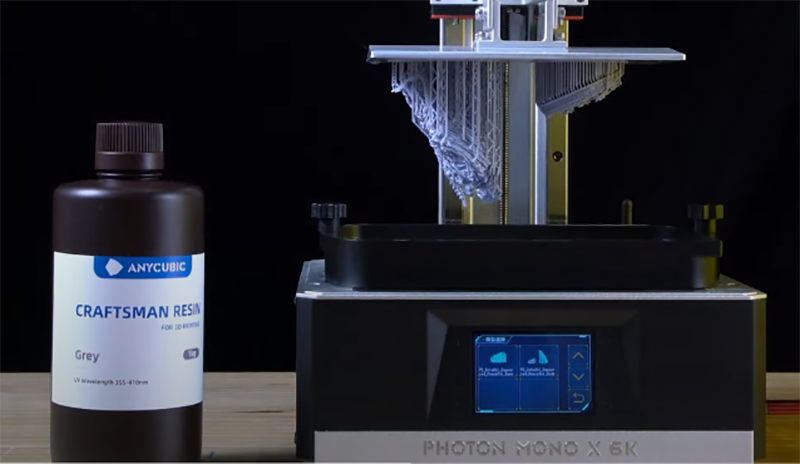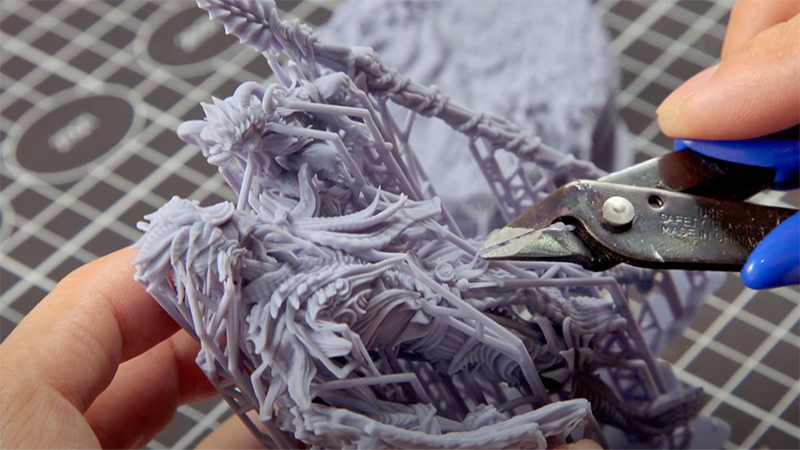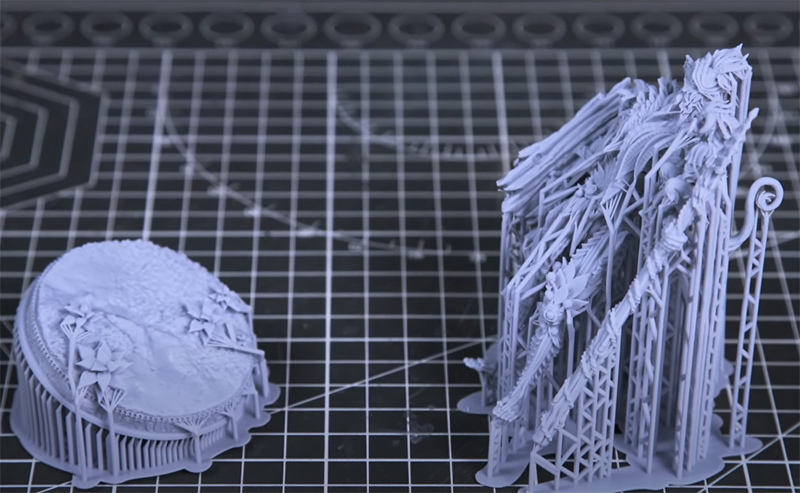Why is it difficult to remove support from resin prints? This is a challenge faced by many resin printer users. In resin printing, it is often necessary to add support structures to ensure that overhangs and complex designs can be successfully printed and to provide stability for 3D prints. Supports are essential for resin prints, but they also have some disadvantages, such as leaving marks on the surface of the model, resin printing supports hard to remove, and post-processing is very time-consuming. In this guide, we discuss in depth the problems of difficult support removal, and effective solutions.
3D Printing Supports Hard to Remove
Supports are temporary structures that are added to the 3D model and serve multiple functions during the printing process, ensuring accurate printing of complex assembly shapes and print overhangs. While it can be difficult to remove supports, we generally believe that they are still essential for some delicate model printing. Add support at the bottom of the model to fix the print to the build platform, which can provide good stability during the printing process of layer-by-layer curing. For complex models, the support acts as a bridge, which can reduce deformation, prevent collapse, and ensure the realization of details.
Reasonable addition and utilization of support structures can make the final printed model more accurate, which is undoubtedly exciting. After the resin printing is completed, how to deal with the support structure and the problem that the 3D printed structure is difficult to remove also need to be carefully considered. Why is it hard to remove supports from resin prints? We want to solve and improve this problem, and it is necessary to explore the reasons why the support is hard to remove.

Why Supports are Hard to Remove from 3D Prints
The difficulty of removing supports depends on factors such as the geometry of the model, the orientation of the print, and the design of the support structure. If it is difficult to remove supports from 3D printed parts, there are several main aspects we need to consider: material, support density settings, contact point settings, post-processing methods, etc. Resin prints have a high level of detail and smoothness, and thin and delicate supports require extra care during removal to avoid damaging the printed part. There are also some support types that are generally considered more hard to remove as follows:

Dense Supports: Some models have parts and supports with a high density of connection points, which can be more difficult to remove cleanly, or leave visible marks on the model surface. Typically, these dense supports are more hard to remove and require extra attention and more delicate handling.
Complex Supports: Supports on models with complex geometry are often more difficult to remove. Especially tight spaces and complex structures can limit the use of tools and make the operation more difficult.
Internal support: Also limited by the design of the model, some hollow parts of the supports are very necessary, but removing them is very hard. Traditional support removal tools are difficult to provide internal support for this part.
How to Handle 3D Printing Supports Hard to Remove
On the basis of common post-processing techniques and tools, for hard-to-remove supports of 3D printing, techniques such as heat treatment can make the process easier, and choosing support removal tools such as beveled cutters can be an effective option.
Using tools: There are tools specifically designed for support removal, and they usually have fine points and angles to help you maneuver in tight spaces without damaging the model. Common tools for hard-to-remove supports: water-jaw pliers, tweezers, pen knife, etc.
Heating resin prints: Slightly heating resin prints can solve the problem of hard support removal. A common method is to use a heat gun or a warm water bath. Be careful not to overheat the print or resin.
Post-processing: After using tools to remove supports, it is inevitable that traces will be left. Therefore, we need to polish the model to remove the bumps on the surface, making the model surface smoother. Ordinary sandpaper, sponge sandpaper, electric sanding pen are the tools that can be used according to the need.
Ways to prevent support from being hard to remove
If we can optimize the support settings before we start printing, the task of removing supports will be more manageable and the risk of damaging prints will be minimized. The most important of these are adjusting support settings and adjusting model orientation when slicing. First, by strategically orienting the model, the need for excessive supports can be reduced. Optimize the direction of the 3D model during the slicing process, and place supports in areas that are not obvious or easy to remove, so as to solve the problem of hard to remove supports.
Second, most slicing software allows users to customize support settings. Parameters such as support density, contact point size, support angle, etc. can be customized and adjusted. As long as the model can be printed stably, adjusting them can make the support less difficult to remove.














